Dehydrated peaches are a delightful treat that can be enjoyed any time of the year. Whether you’re looking for a healthy snack or a tasty addition to your recipes, dehydrated peaches are a fantastic choice. I like to pick up my fresh peaches from a local pick-your-own farm. My peach trees are not large enough yet to be yielding enough fruit. Here’s everything you need to know about this delicious fruit.
The Process of Dehydrating Peaches
Dehydrating peaches is a simple process that involves removing the moisture from the fruit to preserve it. The result is a chewy and sweet snack that is perfect for on-the-go or as an ingredient in your favorite dishes.
Health Benefits of Dehydrated Peaches
Dehydrated peaches are not only delicious but also packed with nutrients. They are a great source of vitamins A and C, as well as dietary fiber. Additionally, dehydrated peaches are low in calories and fat, making them a healthy snack option.
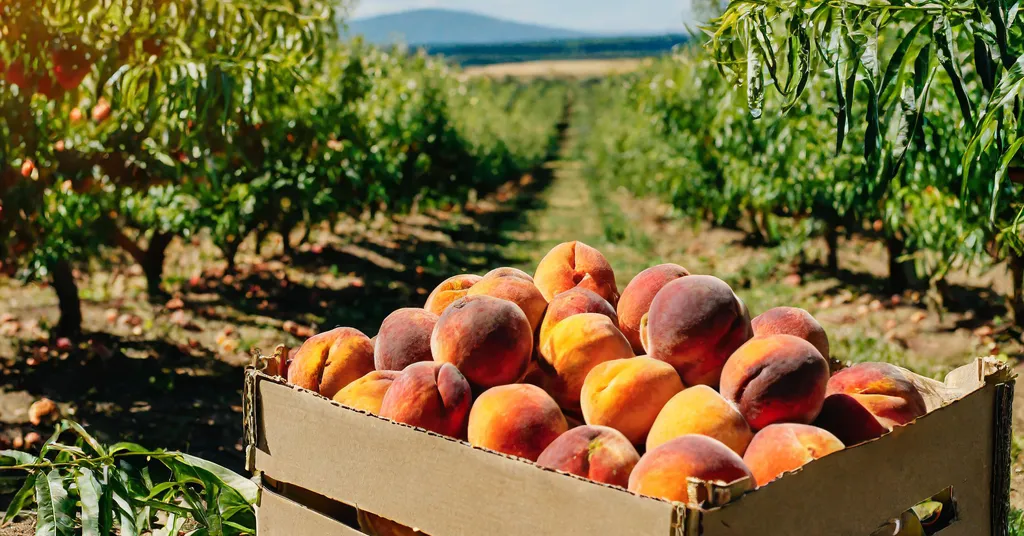
Ways to Enjoy Dehydrated Peaches
There are many ways to enjoy dehydrated peaches. You can eat them on their own as a snack, or add them to your favorite recipes. They are a delicious addition to salads, yogurt, oatmeal, and baked goods. You can rehydrate them by soaking them in water or juice before eating.
Tips for Dehydrating Peaches at Home
If you want to try dehydrating peaches at home, here are a few tips to keep in mind. Start by selecting ripe, but firm peaches. Wash and peel the peaches, you can peel the peaches with a vegetable peeler or blanch them.
The skin on peaches isn’t too tough when dried and is perfectly fine for peaches that will be used dry. If you’re planning to rehydrate and cook the peaches, you may wish to peel them before drying.
Blanching: Peel peaches by blanching for 30 seconds. Boil a large pot of water. Once the water is boiling get a large bowl of ice and fill it with water (Ice Bath) place next to your stove. Cut an X mark into the bottom of the peach (this will help with the skin splitting)Working in batches drop the peaches into the boiling water for 30 seconds, this will cause their skin to split. Using the slotted spoon remove the peaches from the boiling water and immediately put them in the ice bath. This will cause the peaches to stop cooking. Once you have completed this process with all your peaches their skin should easily be removed.
Remove the pit from your peaches with a knife. Using your knife and cutting board cut your peaches into 1/4 inch (0.5 cm) slices and place them into the Ball Fruit-Fresh Produce Protector mixture or lemon water. Mix to make sure all pieces of peach are covered with water. This will prevent your peaches from browning. Make sure to drain well before dehydrating.
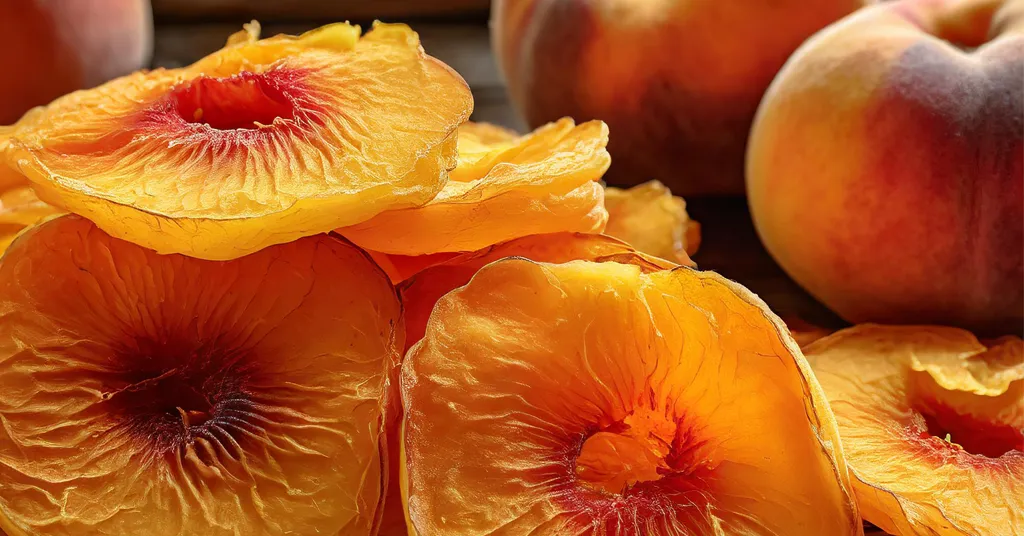
Instructions for Using a Home Dehydrator to Dehydrate Peaches
Arrange the slices on a dehydrator tray and set the temperature to 130°F (50°C). Dehydrate the peach wedges or slices for 8-12 hours. They should feel dry and leathery and still be flexible when they are done.
Instructions for Using an Oven to Dehydrate Peaches
Preheat oven to 200°F. Line a baking sheet with parchment paper and place the peaches in a single layer on the sheet. About two sliced peaches fit on a single baking sheet. You can dehydrate more than one baking sheet at a time if drying many peaches.
Place the baking sheets in the oven and let the peaches dry for two hours. Remove the sheets from the oven and flip each of the peach slices over. Put each baking sheet back in the oven. Cook the peaches for an additional two hours or so, or until the peaches are dried all the way through. Cook times may vary depending on the oven. Remove the baking sheets from the oven and let cool. Place them in an airtight container after they are cooled and store them away from heat or light.
Dehydrated peaches are a delicious and nutritious snack that can be enjoyed in a variety of ways. Whether you eat them on their own or incorporate them into your favorite recipes, dehydrated peaches are sure to please your taste buds. So why not give them a try today?
Additional Peach Preservation Recipes
Recipe Card
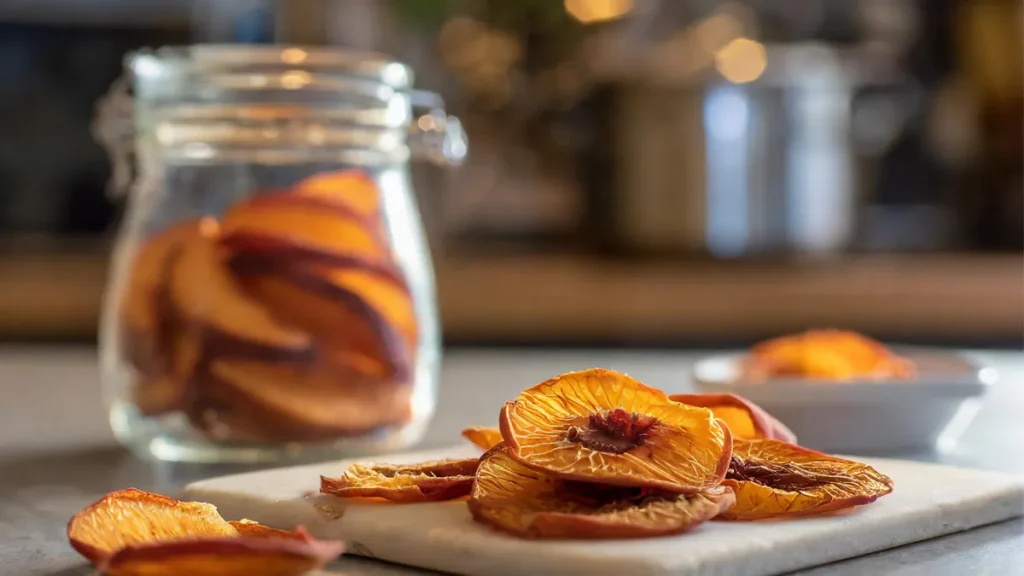
Dehydrated Peaches
Ingredients
- Peaches
- Ball Fruit Fresh Produce Protector Or Lemon Juice
- Lemon Juice Or Ball Fruit Fresh Produce Protector
Want to Save this Recipe?
Instructions
- Wash peaches thoroughly
- Prepare Ball Fruit-Fresh Produce Protector mixture in a large bowl or add lemon juice to water in a large bowl.
- The skin on peaches isn't too tough when dried and is perfectly fine for peaches that will be used dry. If you're planning to rehydrate and cook the peaches, you may wish to peel them before drying.To peel the peaches you can use a vegetable peeler or blanch your peaches to remove the skin. To peel the peaches with blanching follow the next instructions. Boil a large pot of water. Once the water is boiling get a large bowl of ice and fill it with water (Ice Bath) place next to your stove. Cut an X mark into the bottom of the peach (this will help with the skin splitting)Working in batches drop the peaches into the boiling water, this will cause their skin to split. Using the slotted spoon remove the peaches from the boiling water and immediately put them in the ice bath. This will cause the peaches to stop cooking. Once you have completed this process with all your peaches their skin should easily be removed.
- Remove the pit from your peaches with a knife. Using your knife and cutting board cut your peaches into 1/4 inch (0.5 cm) slices and place them into the Ball Fruit-Fresh Produce Protector mixture or lemon water. Mix to make sure all pieces of peach are covered with water. This will prevent your peaches from browning. Make sure to drain well before dehydrating.
- Add peach slices to mesh dehydrator trays making sure they do not overlap.
- Set your dehydrator to around 130°F (54°C).
- Expect peaches to take anywhere from 8 to 12 hours to dehydrate, depending on thickness and humidity. Test doneness around the 8-hour mark and continue to check peach slices if they need more time.
- When done peach slices should feel dry and leathery and still be flexible when they are done.
- Place your peach slices in airtight containers or vacuum-sealed bags to shield them from moisture and air.
- Store in a cool, dark place to maintain flavor and texture over an extended period.


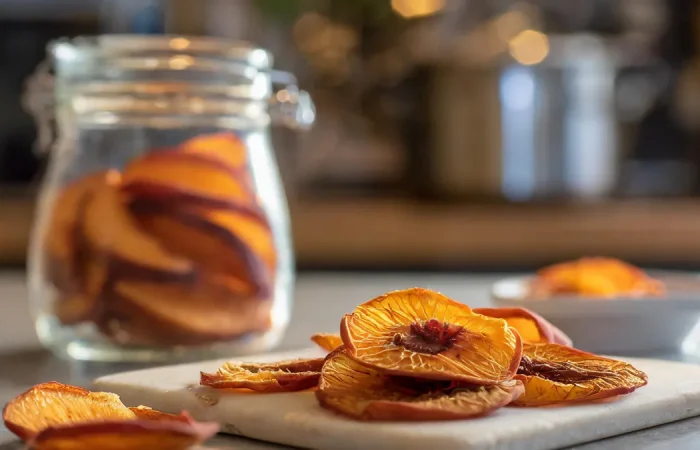


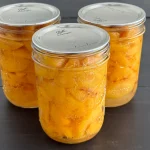









No Comment! Be the first one.